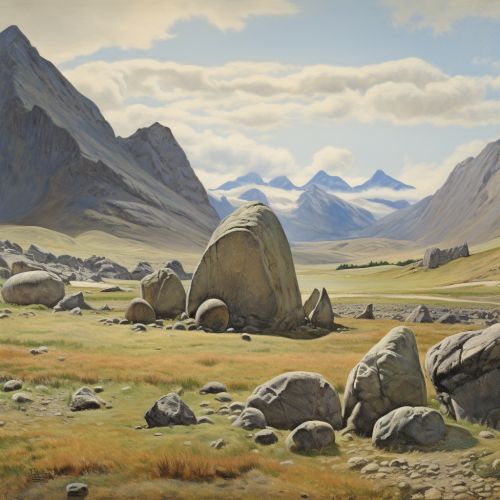Glacial period
Introduction
A glacial period, also known as an ice age, is a prolonged period of reduction in Earth's temperature, resulting in the expansion of continental and polar ice sheets and alpine glaciers. These periods have occurred intermittently over the geological history of the Earth, significantly affecting the planet's climate, topography, and biodiversity.
Geological Evidence
The evidence for ice ages comes from various forms of data, including rock scouring and scratching, glacial moraines, drumlins, valley cutting, and the deposition of till or tillites and glacial erratics. The presence of these glacial landforms and sediments indicates past periods of glaciation.


Causes of Glacial Periods
The causes of glacial periods are complex and still not fully understood. However, they are generally believed to be a result of a combination of astronomical cycles, atmospheric carbon dioxide, continental configuration, and oceanic circulation.
Astronomical Cycles
The Milankovitch theory suggests that glacial periods are influenced by changes in Earth's orbit around the sun, which affect the amount of solar radiation reaching the Earth's surface. These cycles include changes in Earth's eccentricity, axial tilt, and precession.
Atmospheric Carbon Dioxide
Changes in the concentration of atmospheric carbon dioxide can also trigger glacial periods. Lower levels of carbon dioxide in the atmosphere can reduce the greenhouse effect, leading to a cooling of the Earth's climate.
Continental Configuration
The positions of the continents can influence oceanic circulation and climate, potentially leading to glacial periods. For example, the formation of the Isthmus of Panama altered oceanic circulation and contributed to the onset of the current ice age.
Oceanic Circulation
Changes in oceanic circulation can also influence the Earth's climate. For instance, the thermohaline circulation, which distributes heat around the globe, can be disrupted by changes in salinity or temperature, potentially triggering a glacial period.
Effects of Glacial Periods
Glacial periods have profound effects on the Earth's biosphere, causing shifts in the ranges of plant and animal species. They also affect human populations, influencing migration patterns and agricultural practices.
Biosphere
During glacial periods, many species adapt to the colder climate, while others migrate to warmer regions. This can lead to changes in biodiversity and the extinction of some species.
Human Populations
Glacial periods have also influenced human evolution and migration. For example, the Last Glacial Maximum may have created a land bridge across the Bering Strait, allowing humans to migrate from Asia to the Americas.
Conclusion
Understanding glacial periods is crucial for predicting future climate changes, especially in the context of global warming. While the causes of these periods are complex and multifaceted, ongoing research continues to shed light on these fascinating periods of Earth's history.
